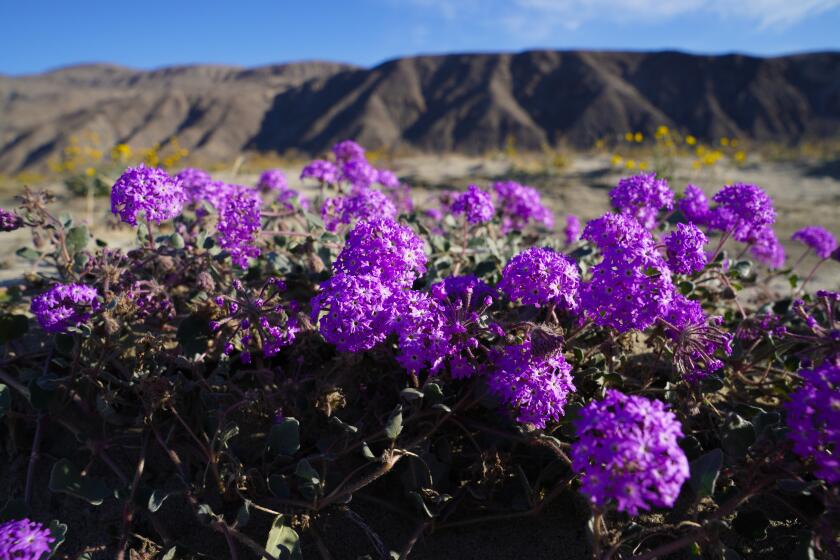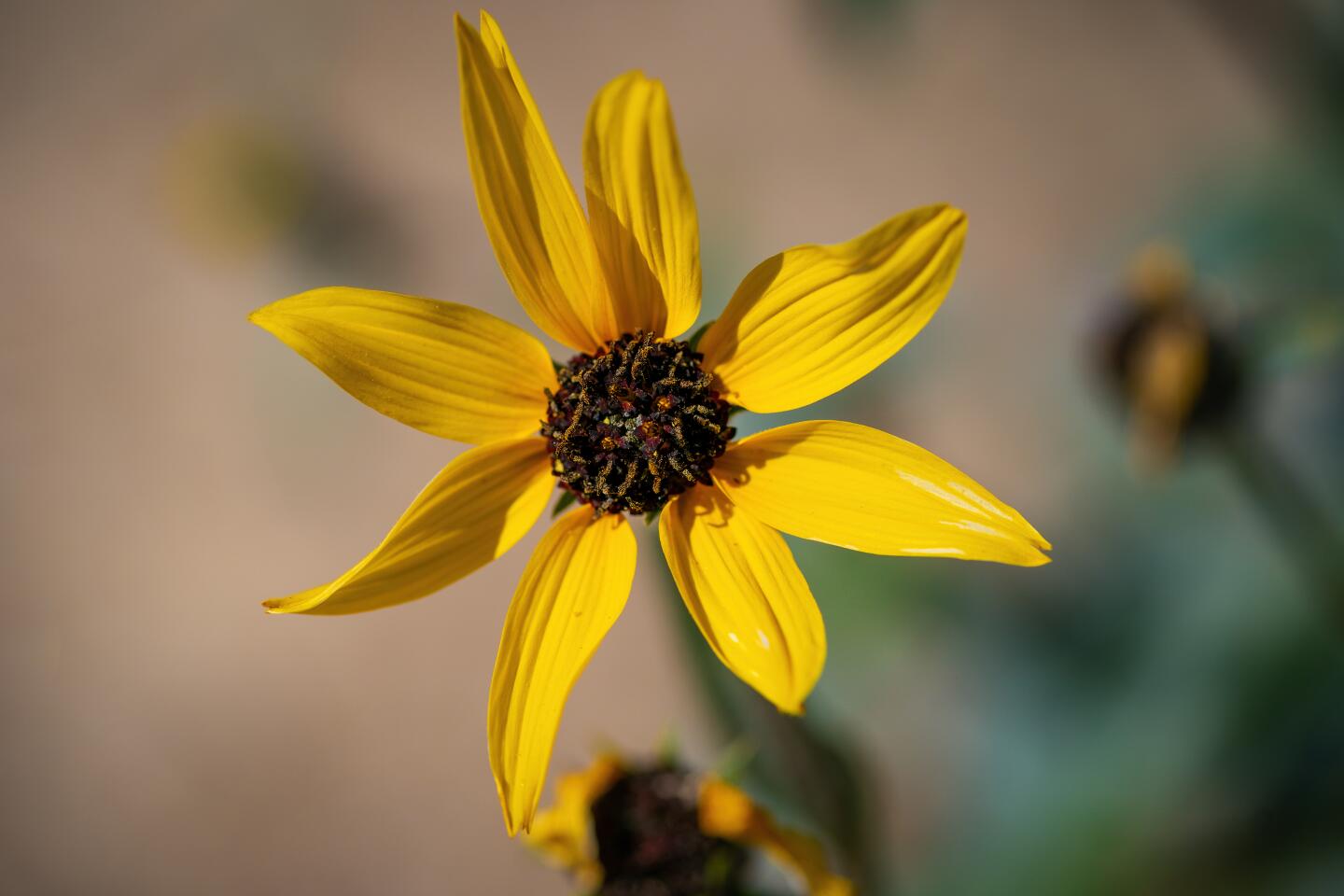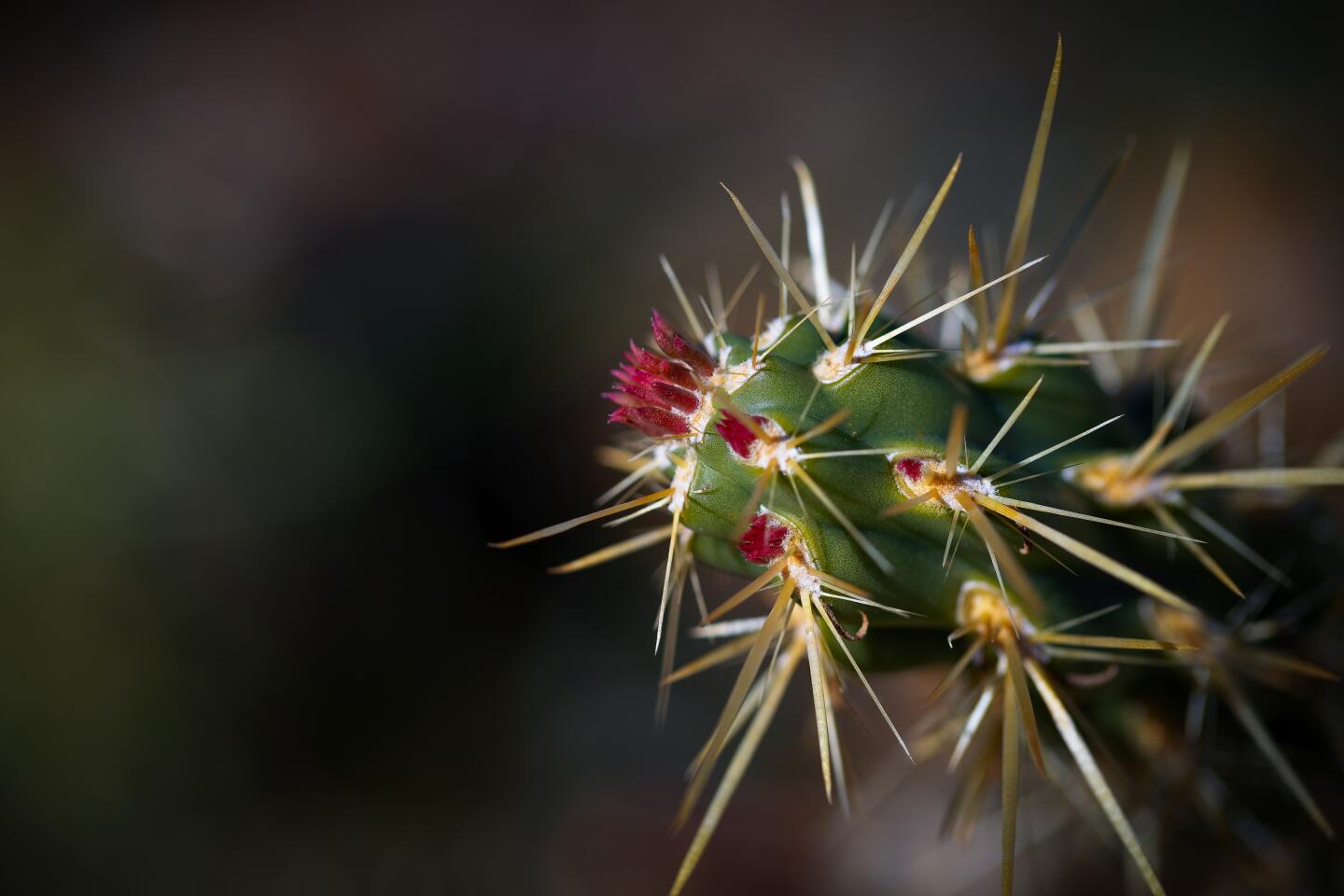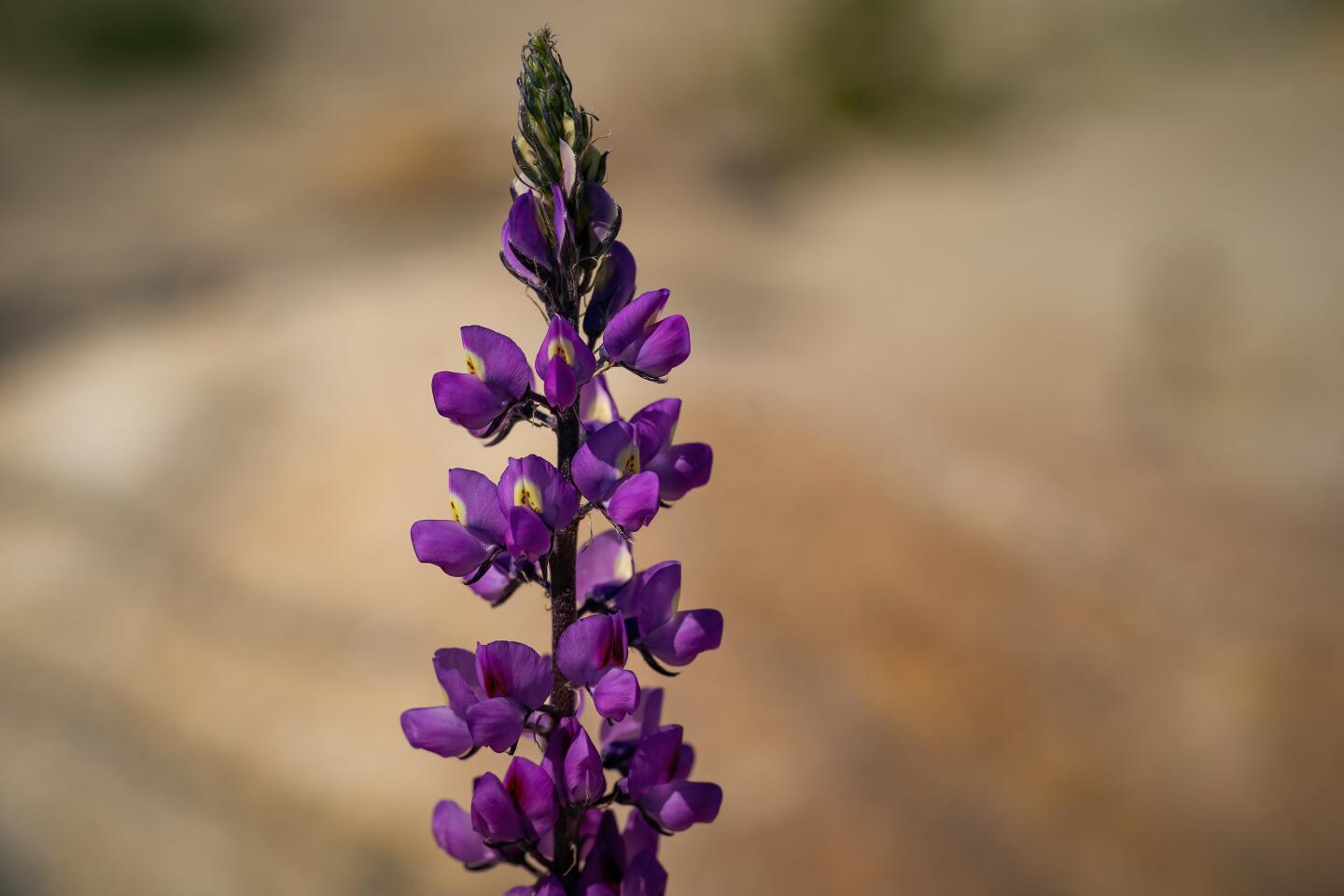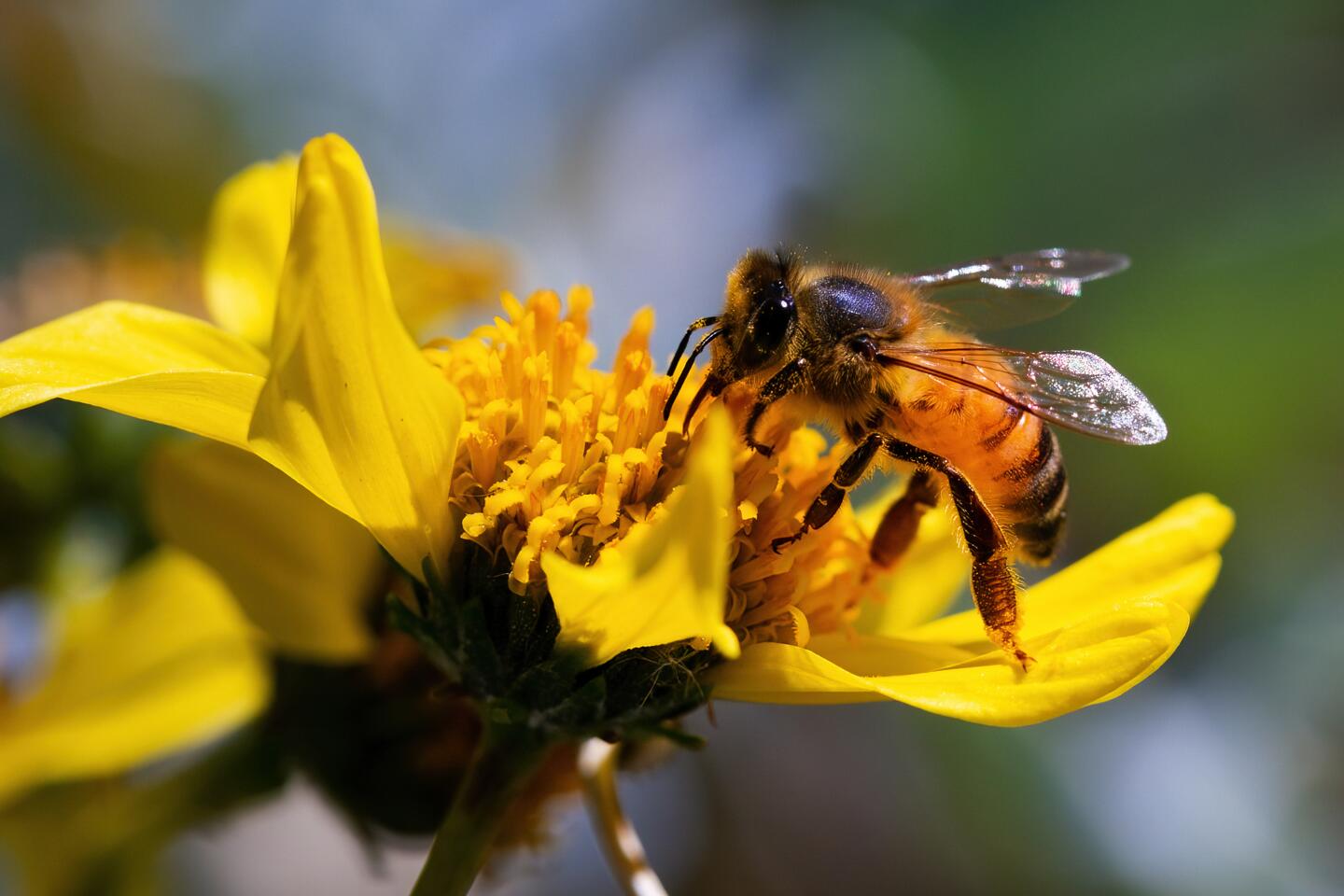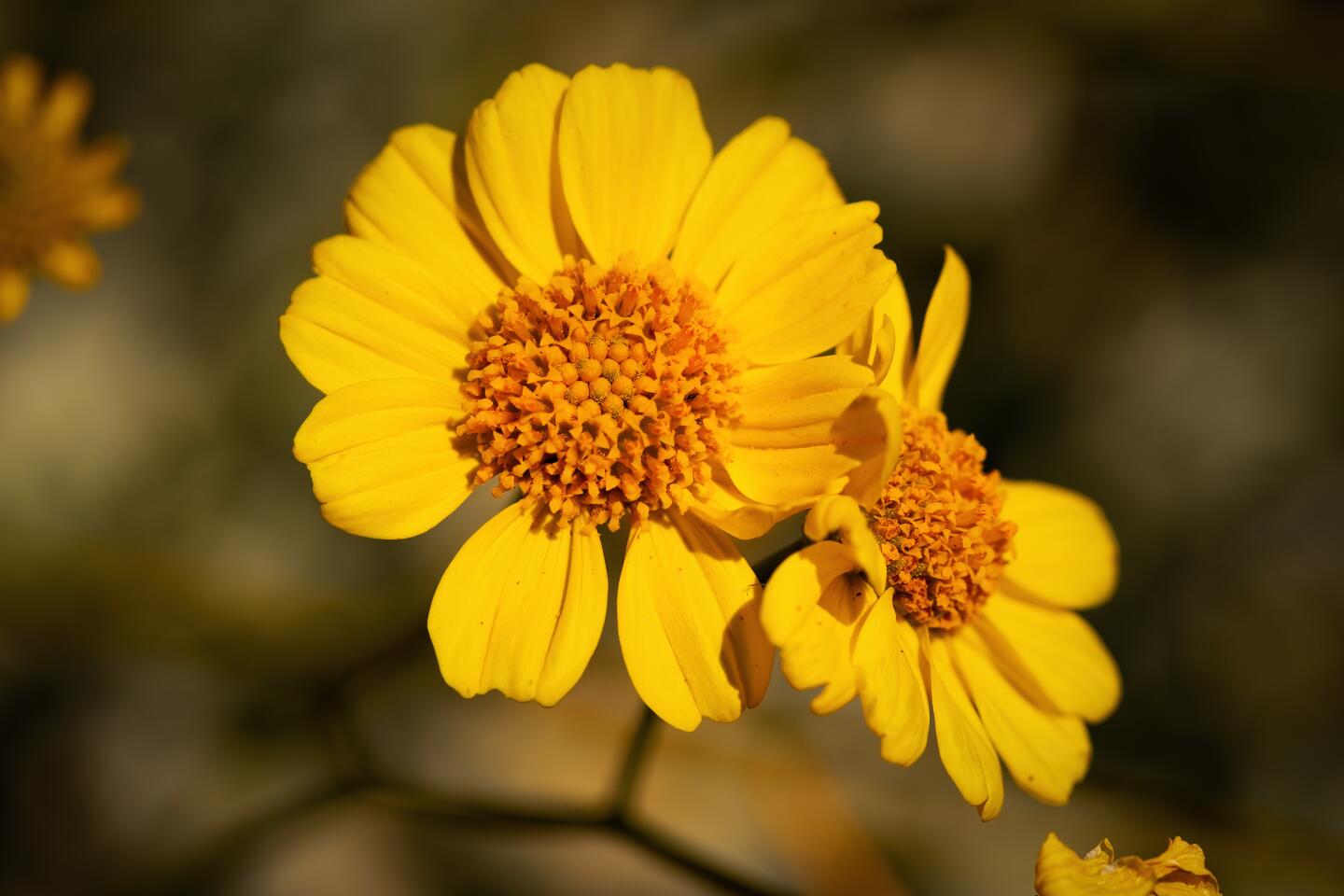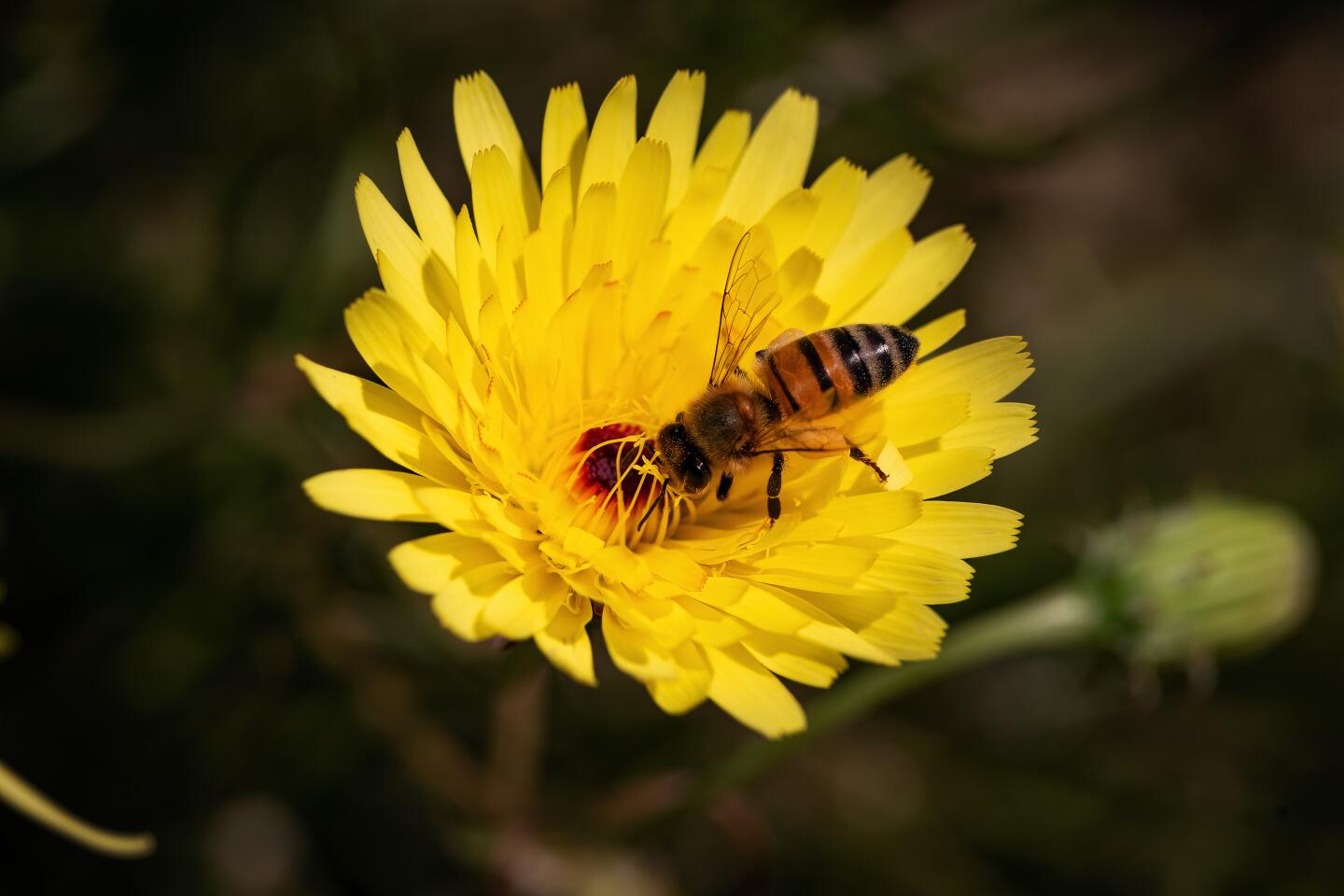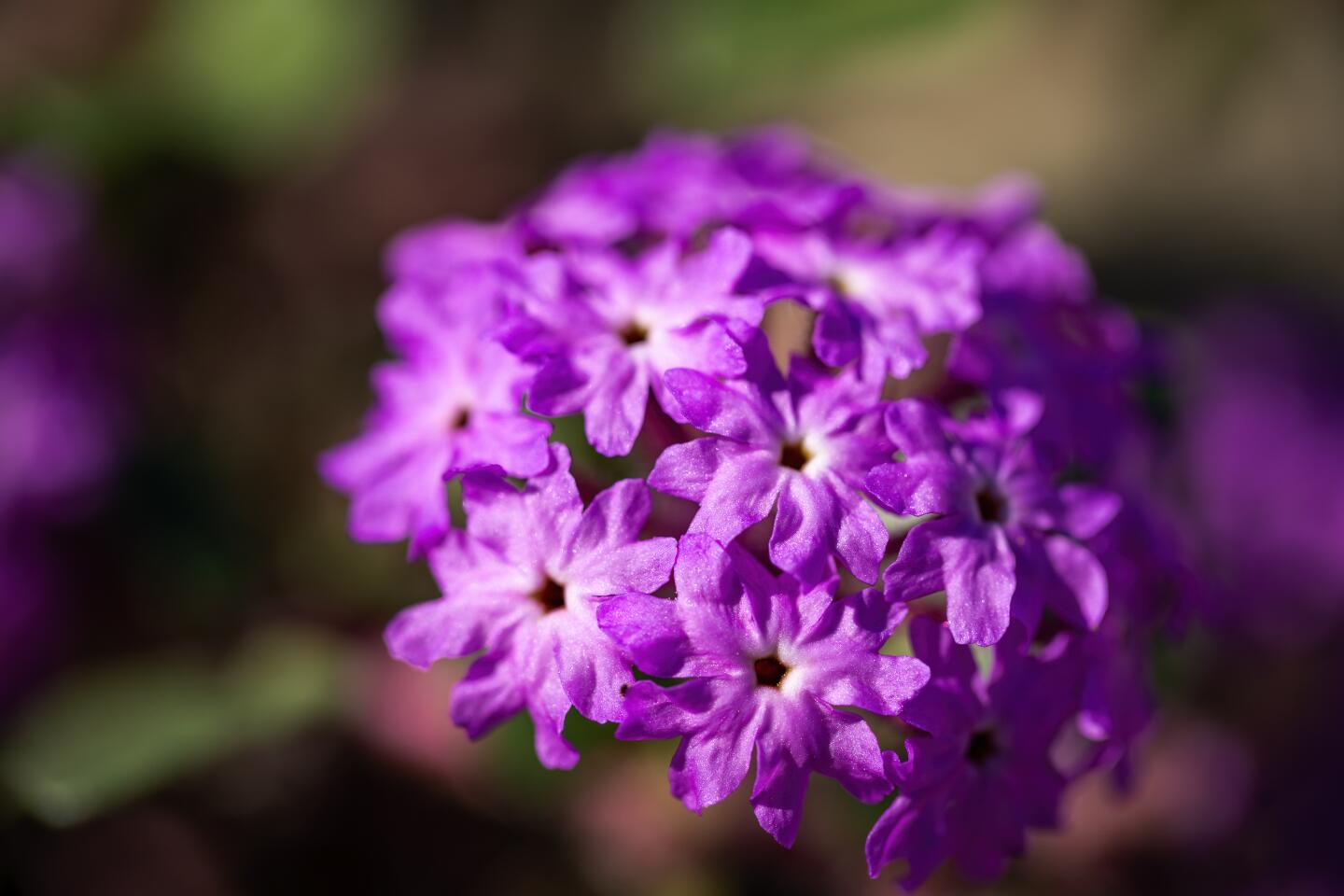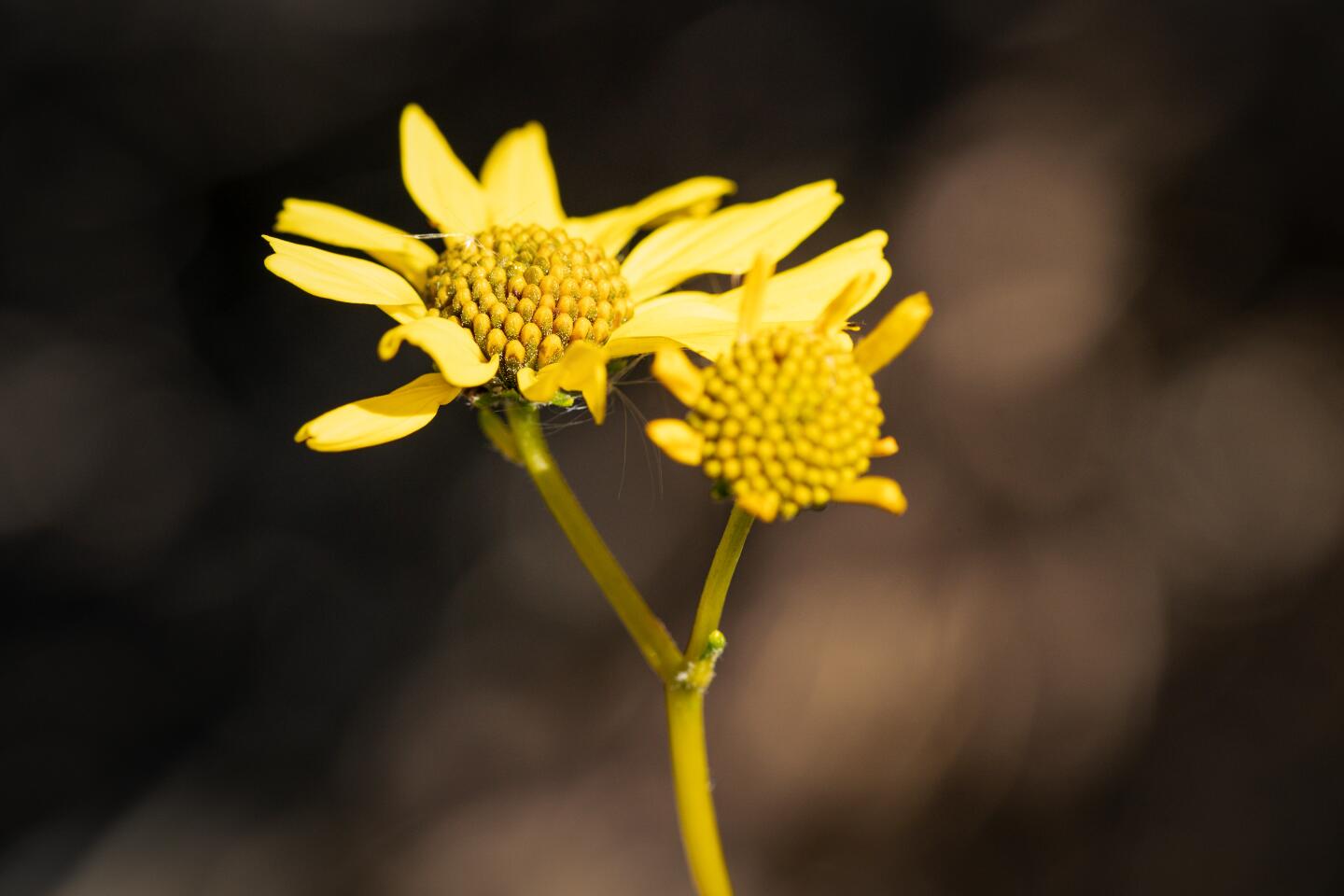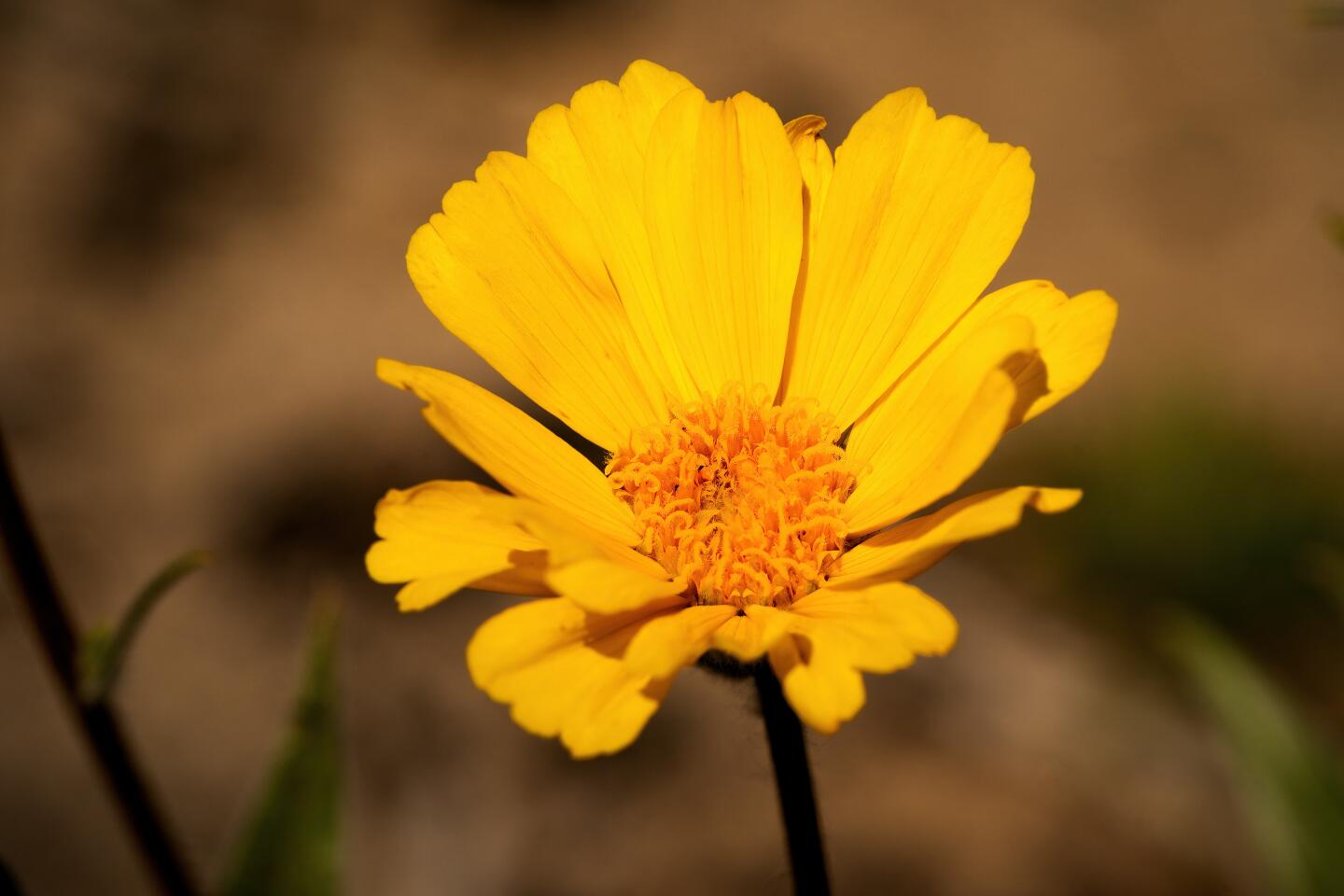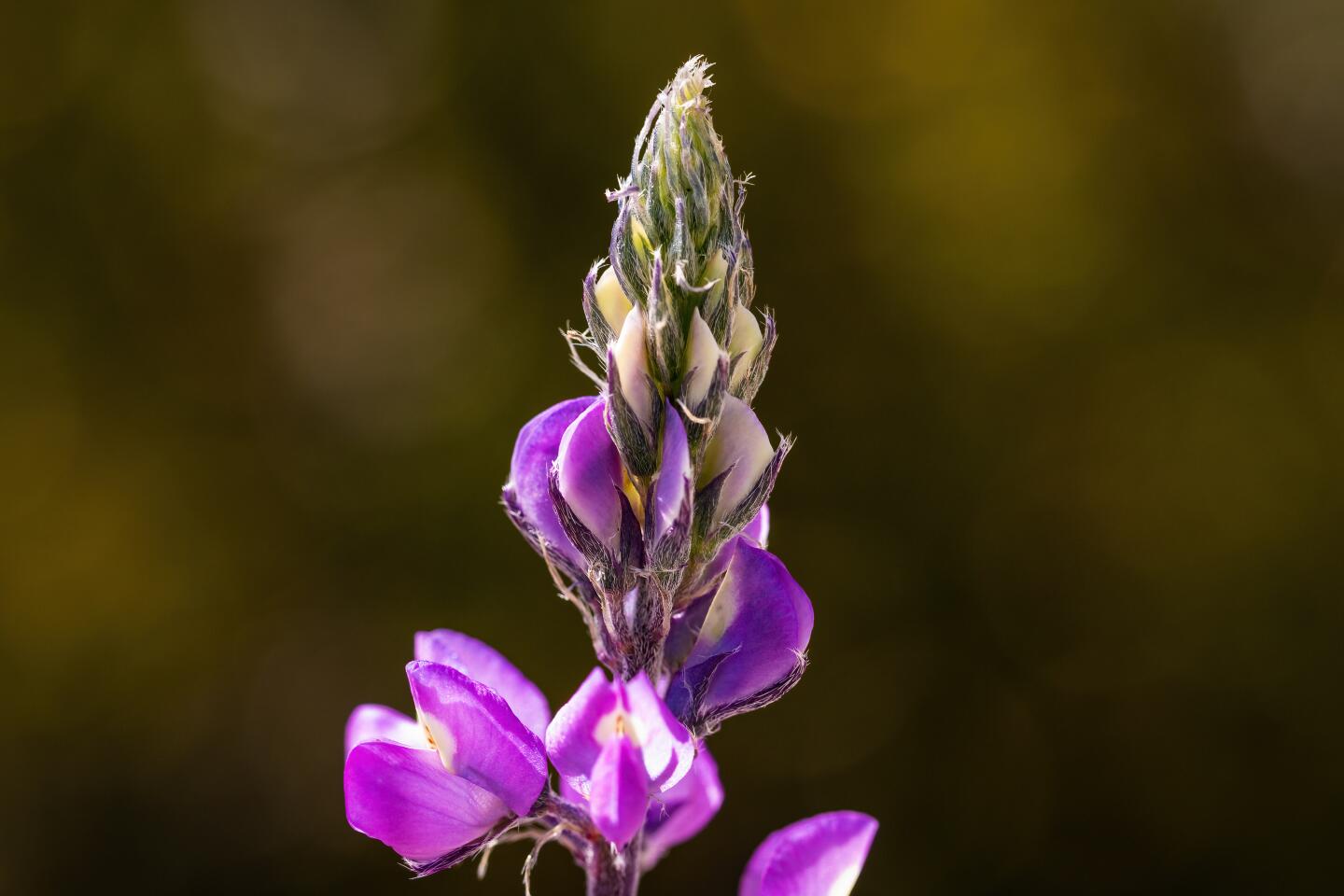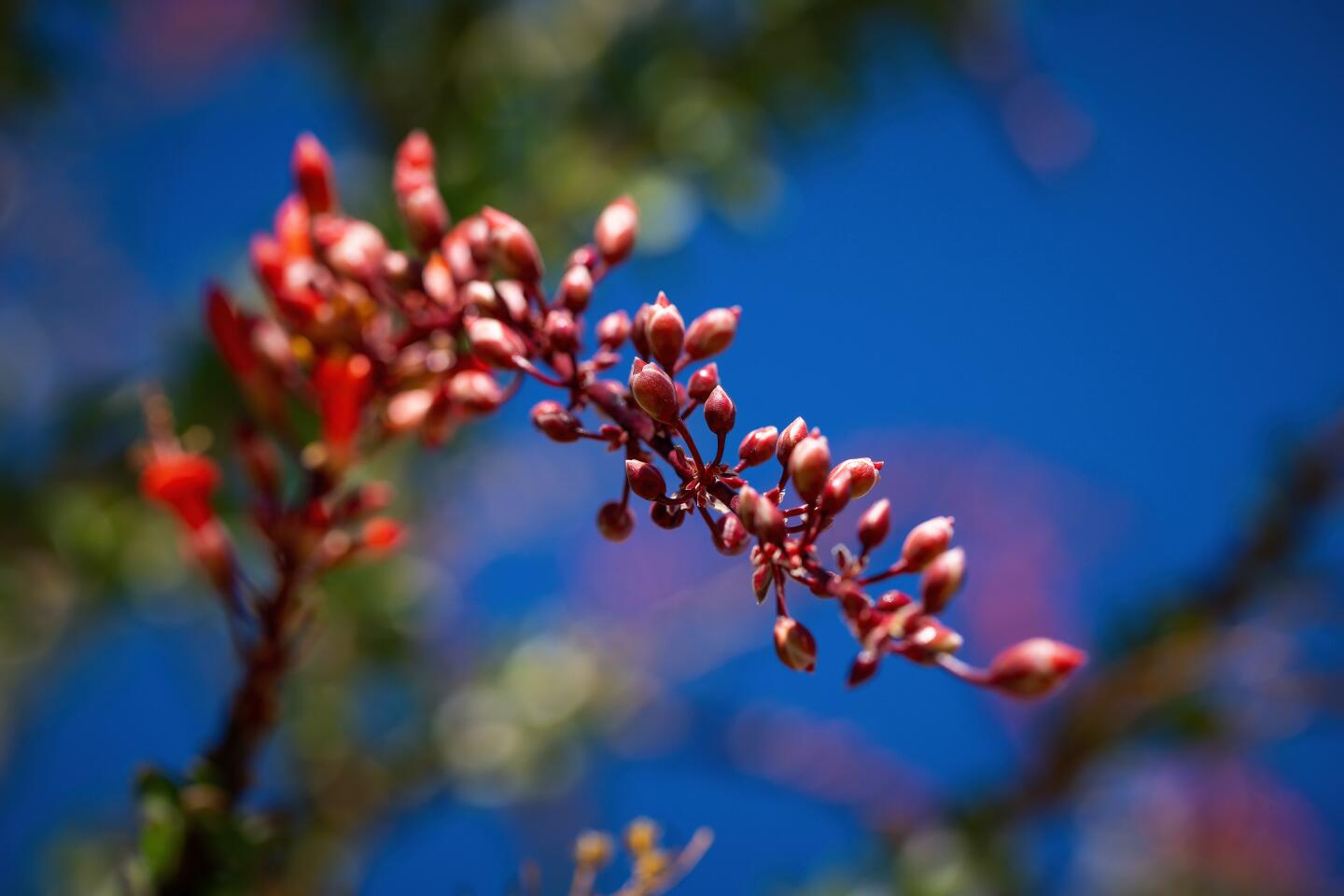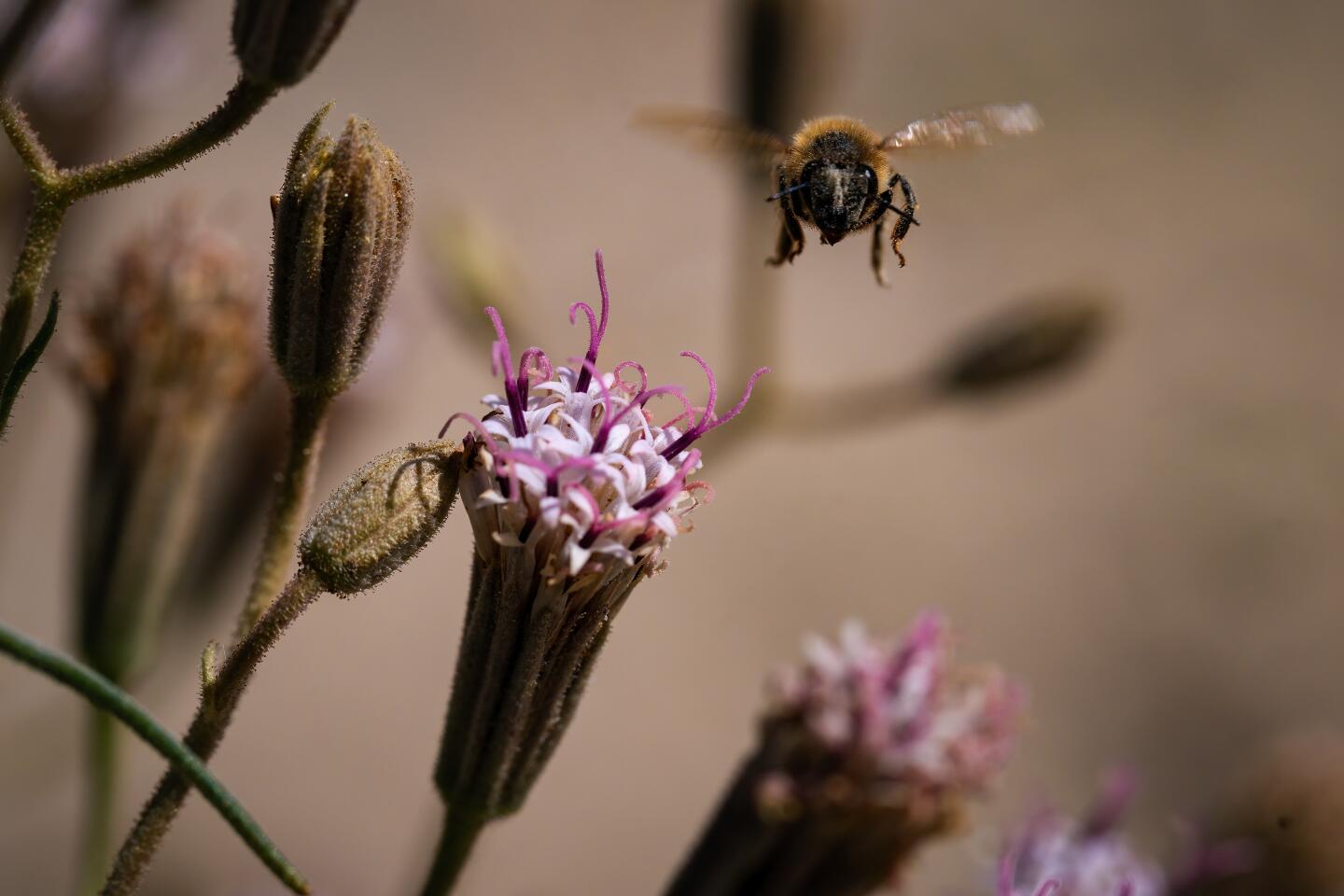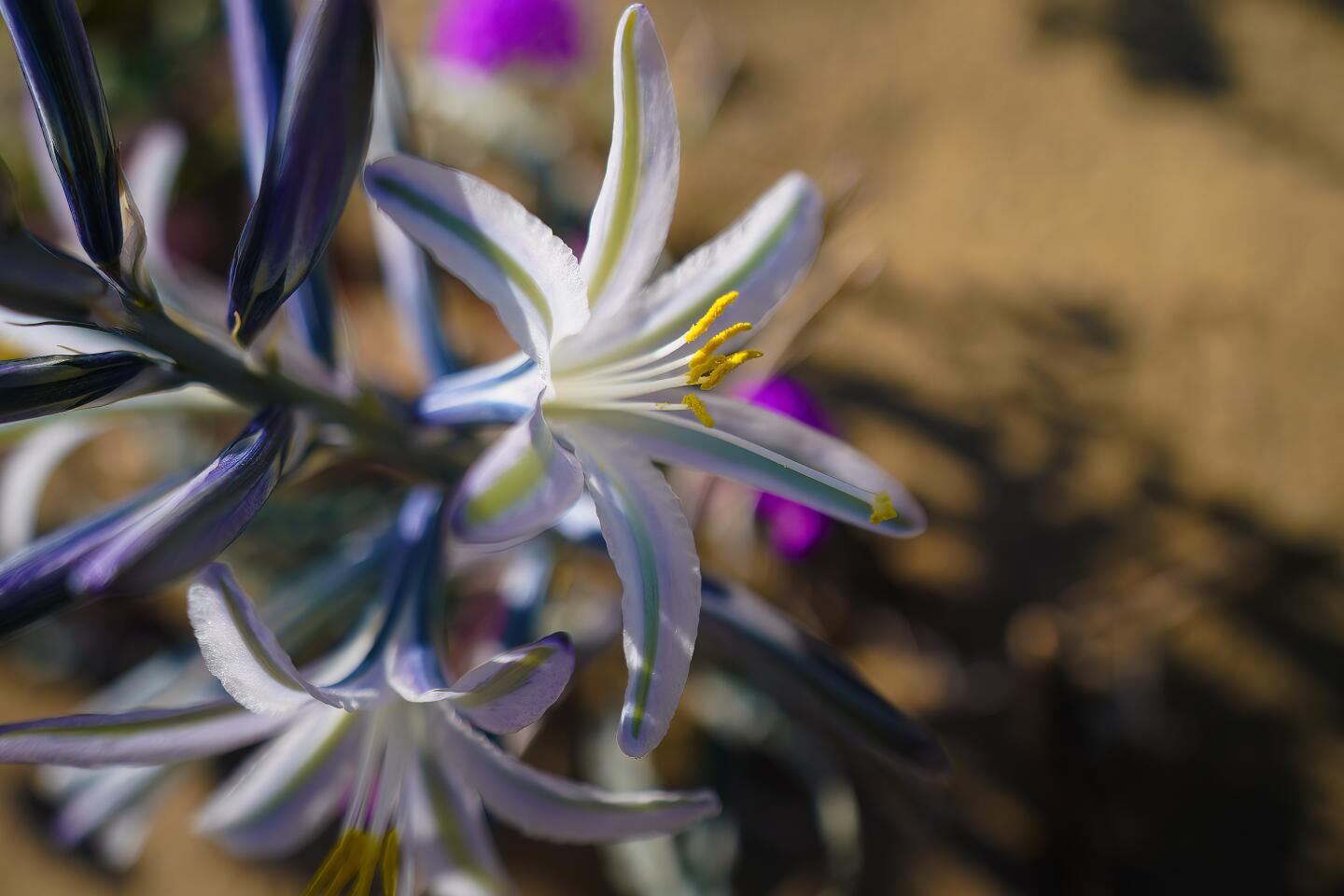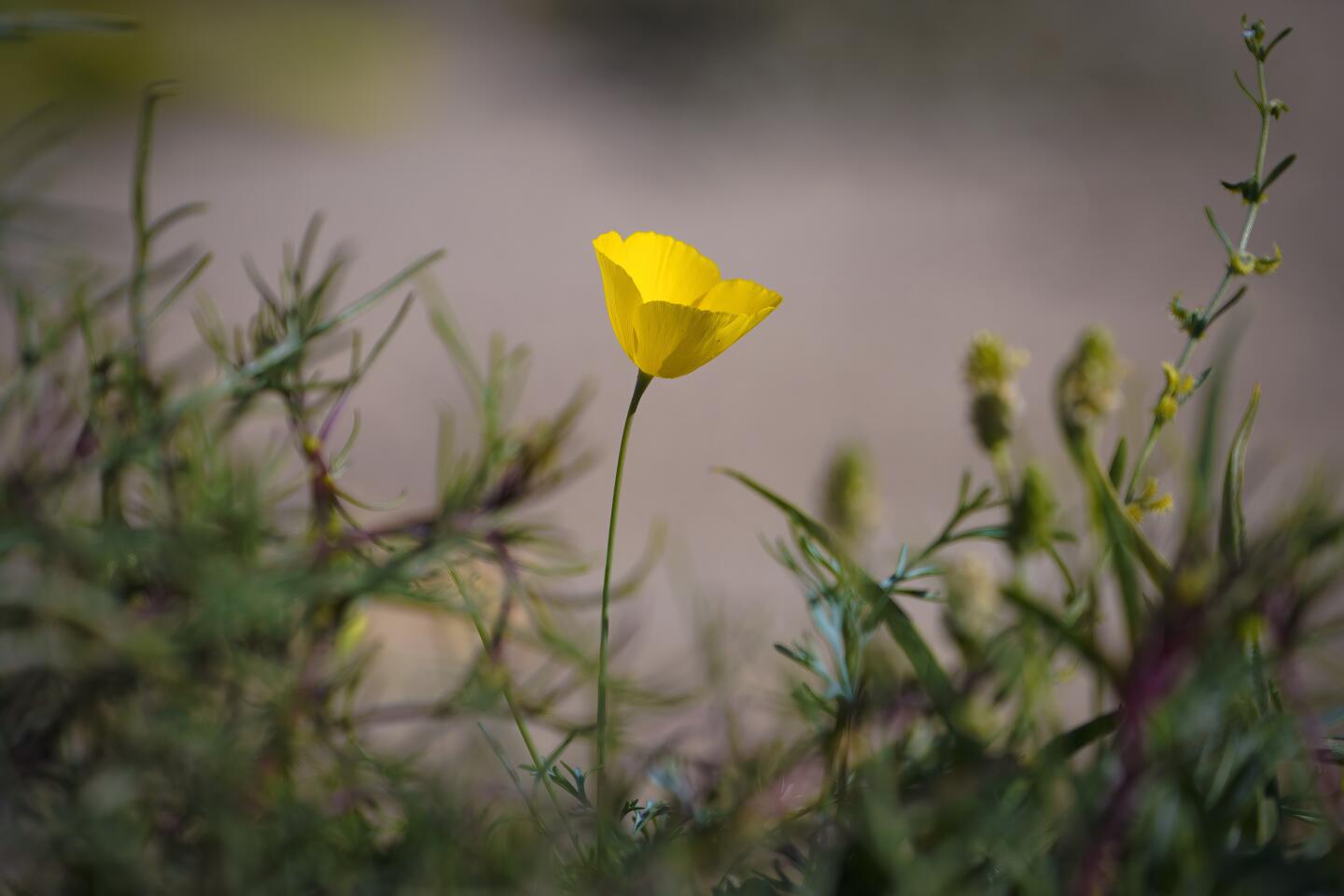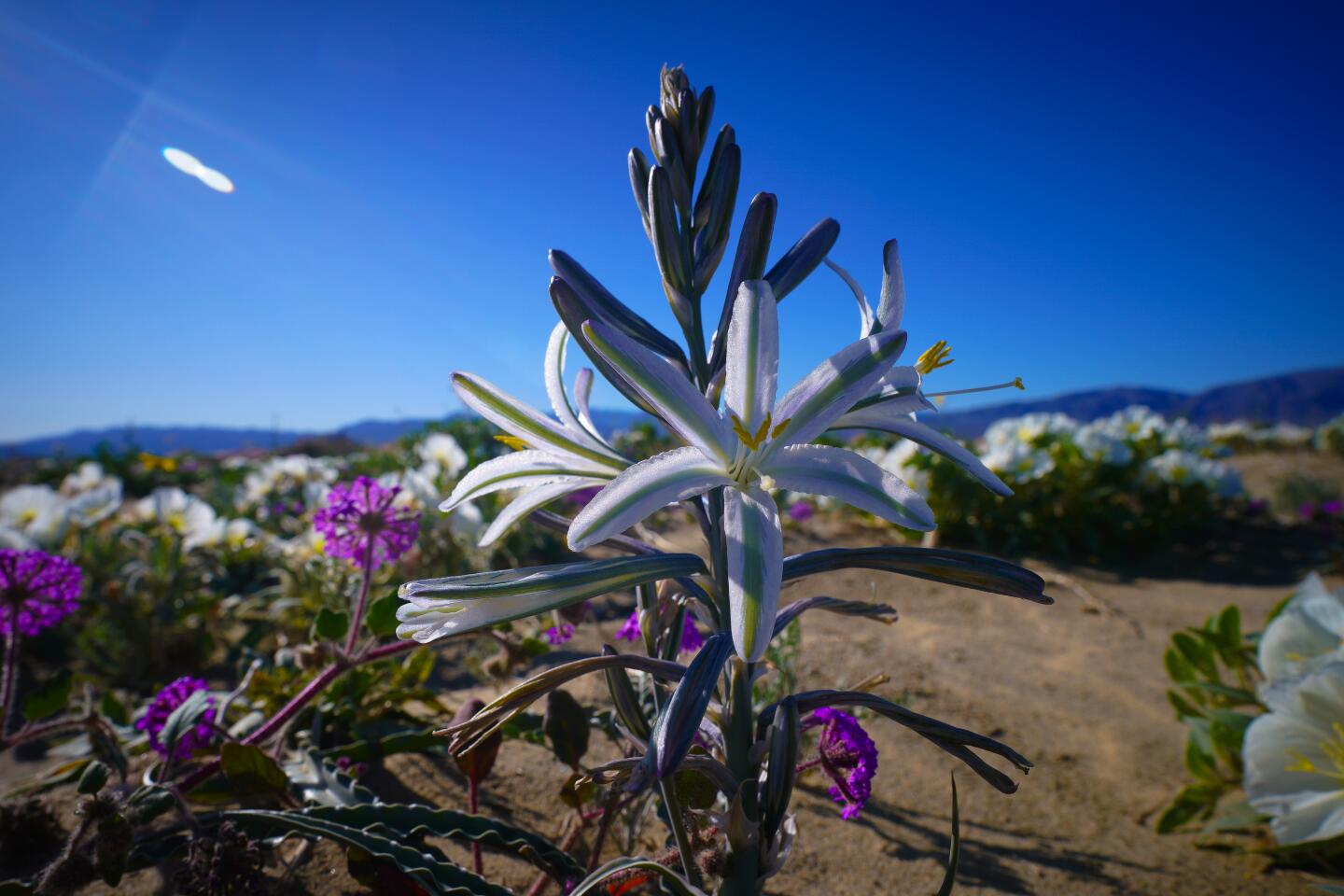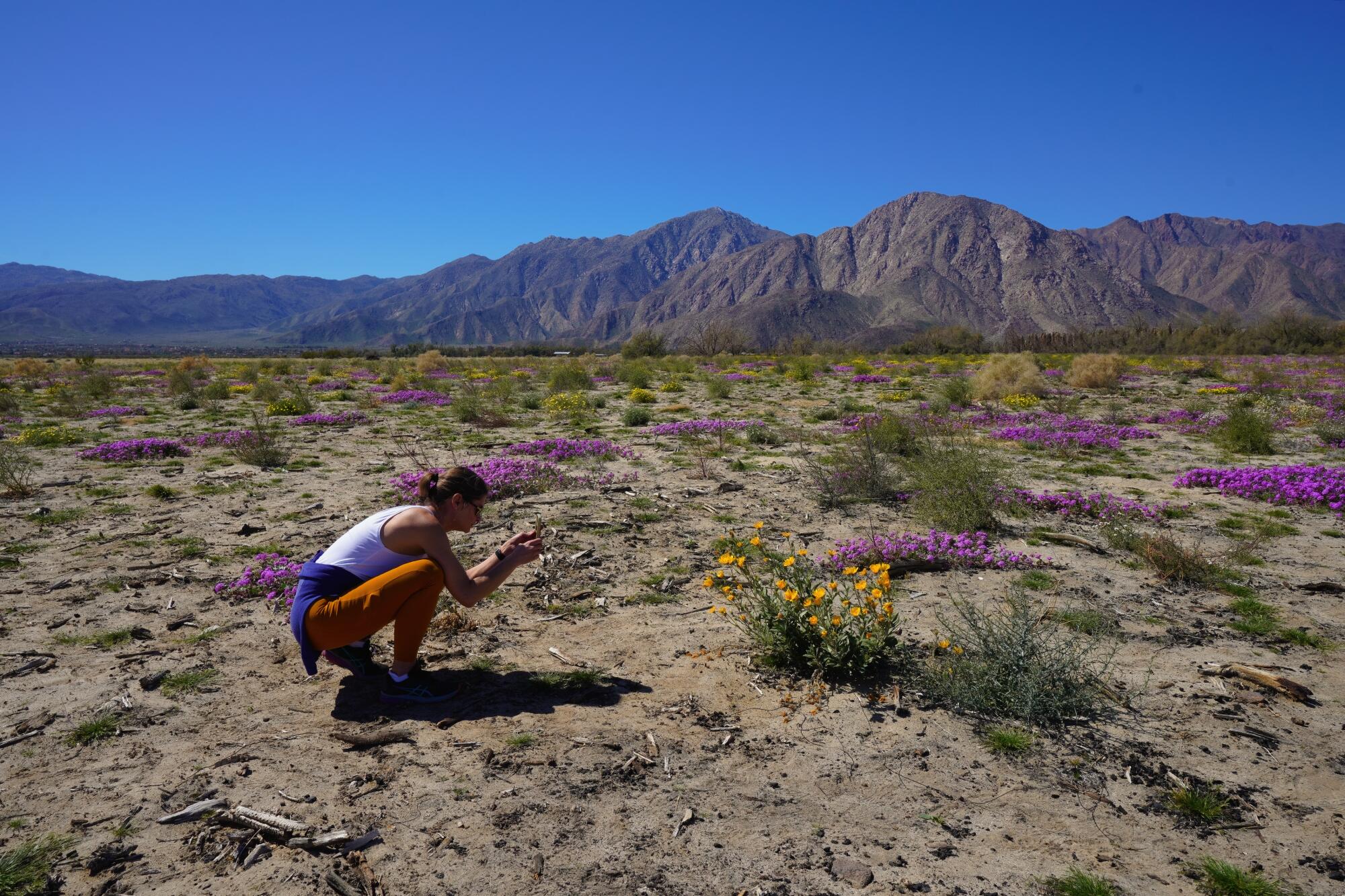
Researchers say an impressive display of wildflowers could soon pop up across the desert in San Diego County. But blink and you might miss it.
- Share via
San Diego — Against snow-capped mountains, purple and golden fields of wildflowers were starting to bloom this week in the Anza-Borrego Desert State Park.
Residents in the nearby town of Borrego Springs are now bracing for the crush of visitors that come searching for these majestic landscapes every spring.
This story is for subscribers
We offer subscribers exclusive access to our best journalism.
Thank you for your support.
The question on everyone’s lips: Will it be a super bloom?
In many ways, the question cannot be answered. There’s no official definition for what constitutes such an event.
“Super bloom is basically a made-up term,” said Jim Dice, reserve manager of UC Irvine’s Anza-Borrego Desert Research Center. “It’s kind of a media, chamber of commerce thing.”
Looking for flowers near San Diego? This guide will tell you where to go, what rules you need to know and how to keep the wildflowers safe.
However, some years are particularly bountiful, he conceded, especially when late rains coupled with cooler temperatures prime the soil for an explosion of color.
This season could fit the bill, he said. Although, how long it will last is anyone’s guess.
“As the seeds germinate and start growing, if it’s really warm then they’re going to pop all at once, and it’s going to be over pretty quickly,” Dice said.
If locals are hesitant to use the phrase “super bloom,” it’s likely because wildflower tourism has developed a reputation for getting out of hand in recent years.
Borrego Springs was trampled by visitors in March 2017 after the first large bloom in years was hyped on social media and in the press. A traffic jam of cars stretched up Montezuma Valley Road. Restaurants and grocery stores ran out of food. And with restrooms in short supply, people took to watering the flowers.
The town of roughly 3,000 people prepared itself accordingly in 2019 when another particularly lush bloom brought an influx of tourists. The town set up traffic control measures as well as dozens of portable toilets near popular fields, such as along Henderson Canyon Road.
The community has held several planning meetings to prepare for wildflower season this year, which included park officials, law enforcement and local business owners.
“Now people are more attuned to what they need to be prepared for,” said Jim Dion, executive director of the Borrego Village Assn. “The grocery and other stores have ordered more water, more supplies for the influx of folks.”
Other areas across Southern California are scrambling to keep up. Earlier this year, Lake Elsinore in Riverside County shut down access to its popular Walker Canyon Road after visitors trampled fields of golden poppies in 2019. Officers have been patrolling the area, ready to dish out tickets.
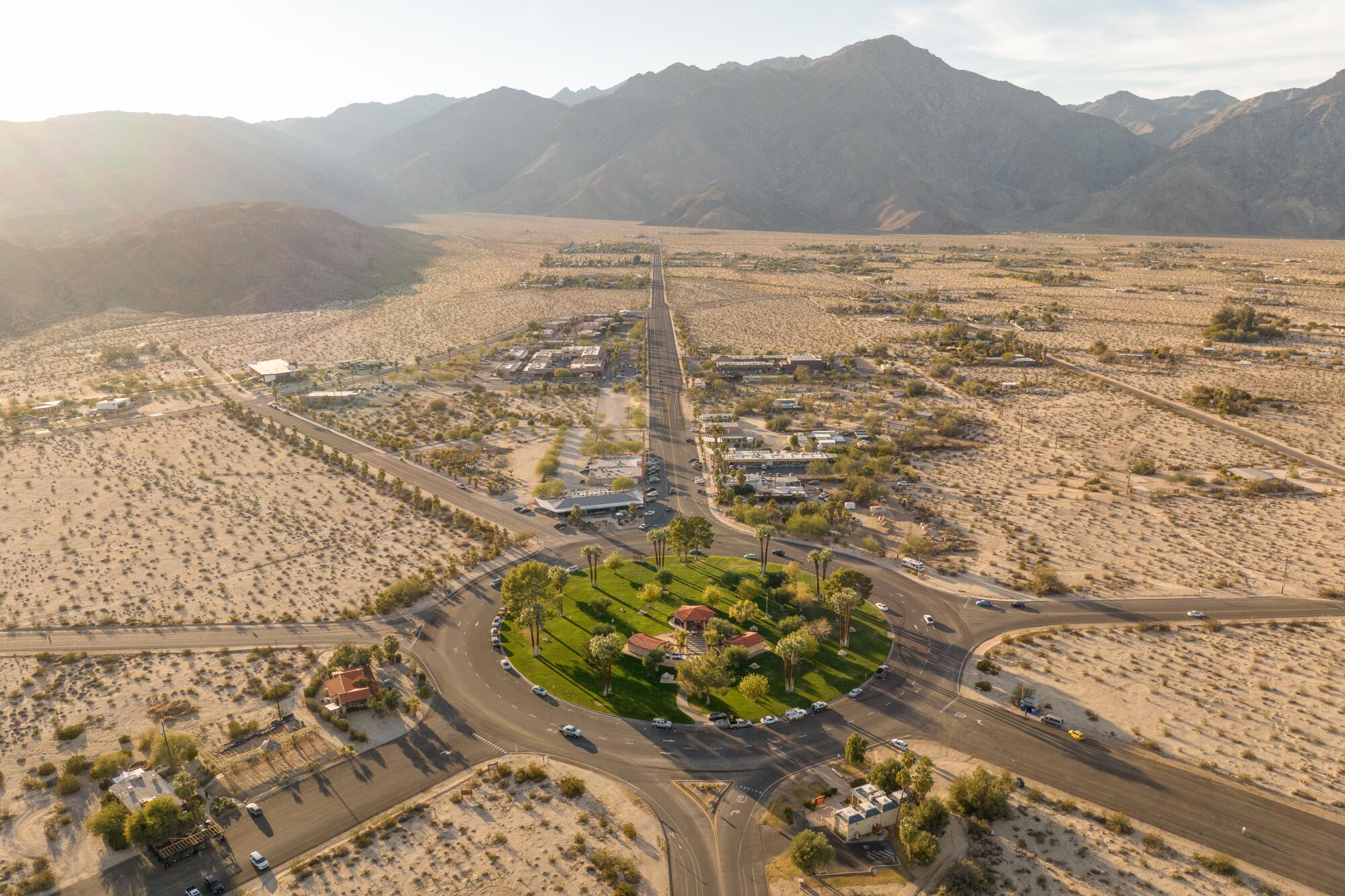
While folks in Borrego Springs say they have things under control, many downplayed the potential of this year’s bloom. An environmental scientist with the park went on record in the Borrego Sun last month calling the rain forecast “bleak” and saying super blooms require 10 inches of rain.
The desert has in recent months already experienced a rare winter bloom as a result of substantial rains in September and October. And the wet weather has continued. An impressive 4 inches of rain has fallen in the area since January.
For comparison, the 2019 super bloom saw 5.2 inches over that time frame. The flowers in 2017 got about 4.5 inches in January and February. The average in the desert for the entire year is about 6 inches.
Françoise Rhodes, executive director of the Borrego Springs Chamber of Commerce, flatly told the Union-Tribune: “It will not be a super bloom.”
“We’ve had a steady stream of people coming in from all directions,” she said. “The nice part is that it’s been spread out. It hasn’t been this massive amount of people for a week.”

There’s still time for that to change. The state’s recent soaking from record-breaking storms has Southern Californians dreaming of flower-carpeted deserts.
Jen Tokash of Los Angeles was spending time off work this week in San Diego’s desert.
“I hadn’t been down this way in a while, and with all the rain, I figured it would be great,” said the 45-year-old, standing in a soft sandy field sprouting hardy desert sunflowers. “It’s just beyond beautiful.”
Former park Superintendent Mark Jorgensen said this year’s bloom should be “excellent.” The longtime Borrego Springs resident said the rain gauge at his home collected about 10 inches since last fall.
“I don’t know what constitutes a super bloom,” he chuckled, “but you know it when you see it.”
Researchers said the bloom could prove most impressive in the upper elevations and along the southern part of the park where rainfall has been significantly higher.
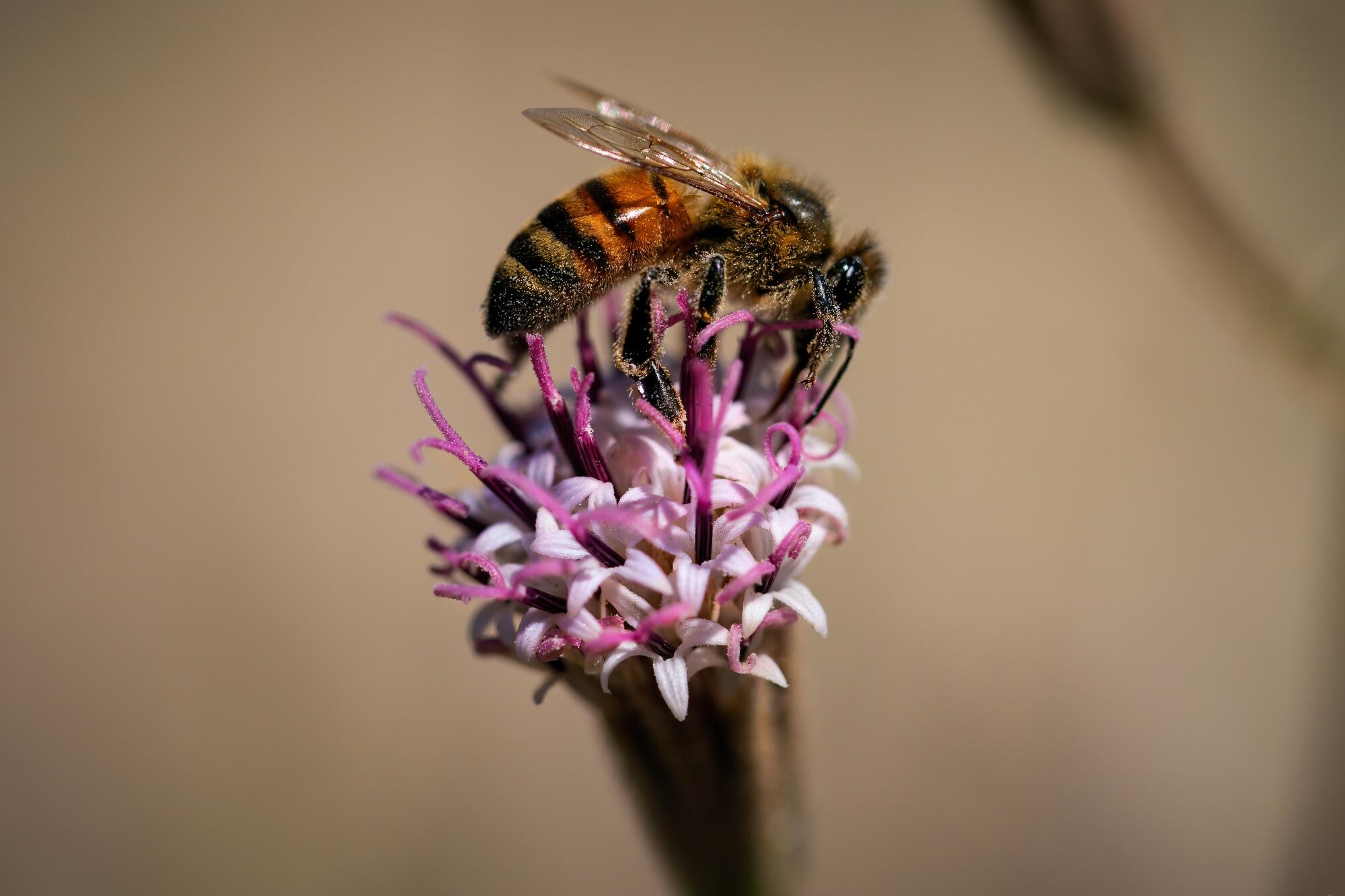
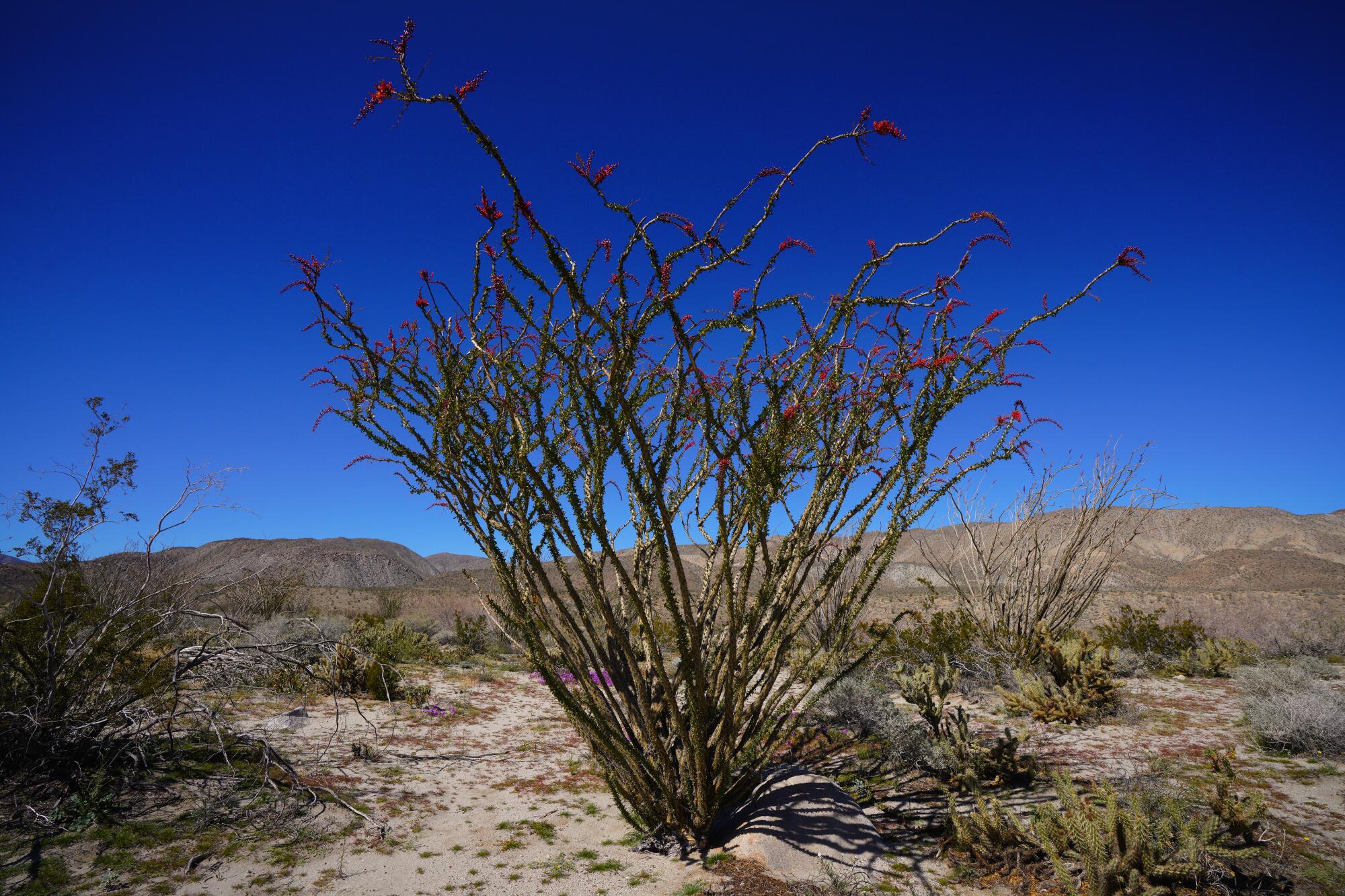
Robert and Anne Logan wanted to beat the crowds and the heat. The retired couple drove down from Orange this week to take in the park’s lush scenery at a perfect 70 degrees.
“We just love our desert, and this one is the best,” said Anne, snapping photos of purple sand verbena in Coyote Canyon. “We come once a year.”
With a camera slung over a bright yellow shirt, Robert walked among green-tentacled ocotillos, tips blooming bright red. He said he relishes the park’s “peacefulness” and “solitude.”
“I like Joshua Tree, but it’s too crowded,” he grinned.

More to Read
Sign up for Essential California
The most important California stories and recommendations in your inbox every morning.
You may occasionally receive promotional content from the Los Angeles Times.
